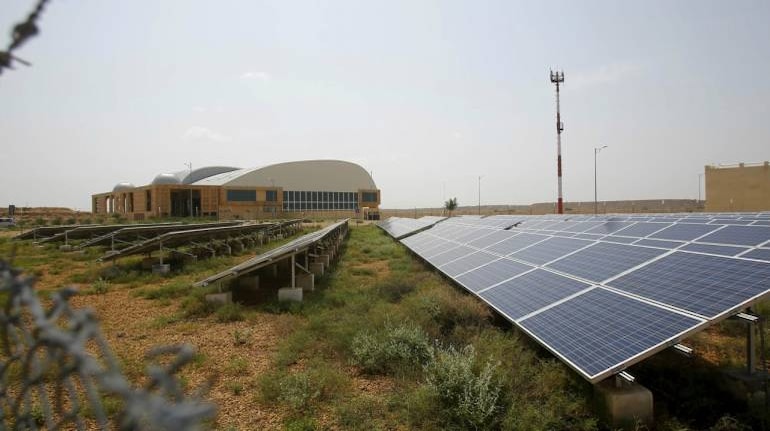
India has achieved a milestone in its journey to realise its ambitious targets in clean energy production and usage. Renewable power units, including solar and wind energy, had a 10 percent share in India's electricity output in April-October 2018, reported The Financial Express.
Total installed power capacity of renewable energy has also grown from 14 percent in FY15 to over 20 percent in the current fiscal.
The United Nations Framework Convention on Climate Change signed in Paris in 2015 dictates that India has to up its share of non-fossil power in installed capacity to 40 percent by 2030.
The Centre aims to achieve 175 gigawatts (GW) of renewable energy capacity by 2022. This would include 100 GW from solar energy, 60 GS from wind, 10 GW from biomass and 5 GW from small hydroelectric projects.
Electricity generated by green resources registered a compound annual growth (CAGR) of 18.2 percent between FY15 and FY18 in India. Conventional power production only saw a 4.8 percent CAGR in the same period.
Solar power capacity addition this year was twice the net addition in the coal-based power sector. Solar capacity shot up by 95 percent in 2017, whereas high-emission energy capacities added that year were 75 percent less than the previous year.
The reason renewable energy is going strong is India's commitment to cut its carbon footprint, reduced prices of solar power tariffs and active power schemes in the country, according to experts.
As the solar module prices tanked and technology improved, solar power tariffs fell from Rs 17 per unit in 2009 to just Rs 2.44 per unit in July 2018. The sector has also become very competitive.
There is an underlying worry about the viability of such low rates, as overall project costs will increase after import duties on solar modules.
On the other hand, states may not be as willing to implement solar energy resources in their infrastructure if it is not cheaper than the conventional resources.
The government has put a 25 percent safeguard duty on import of solar cells to help domestic manufacturers for a year till July 19, 2019.
Discover the latest business news, Sensex, and Nifty updates. Obtain Personal Finance insights, tax queries, and expert opinions on Moneycontrol or download the Moneycontrol App to stay updated!